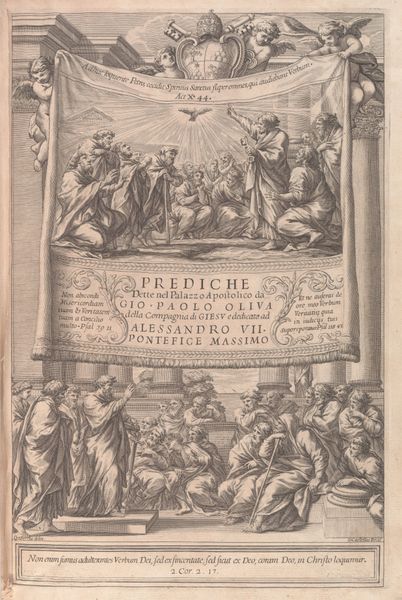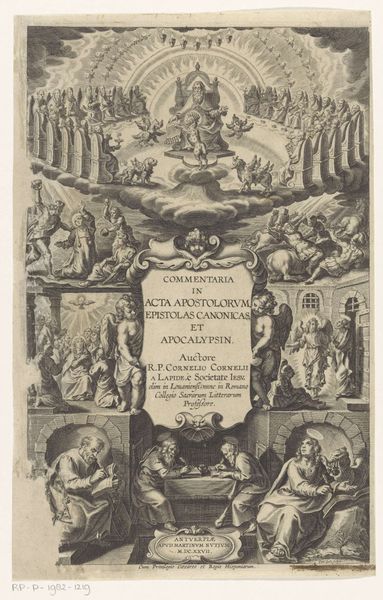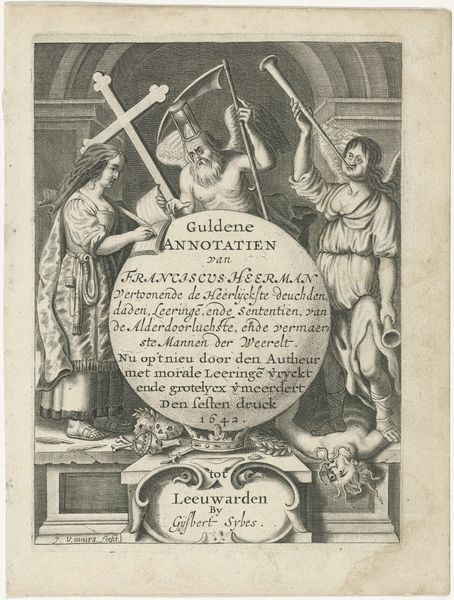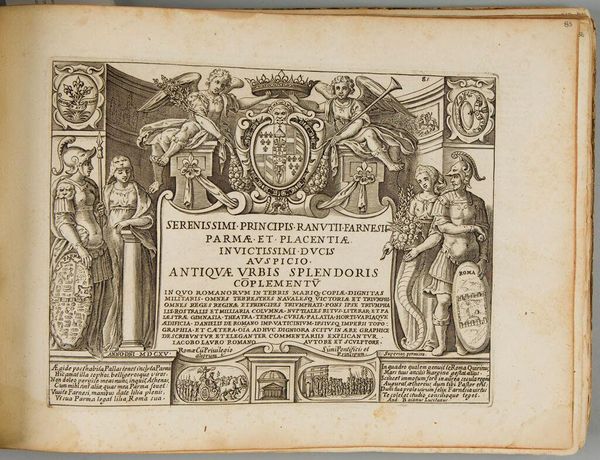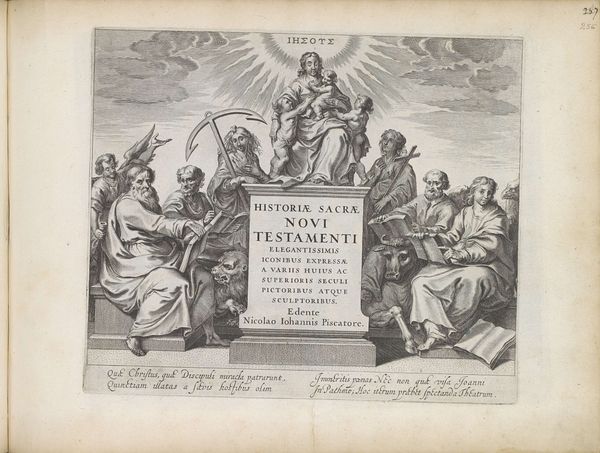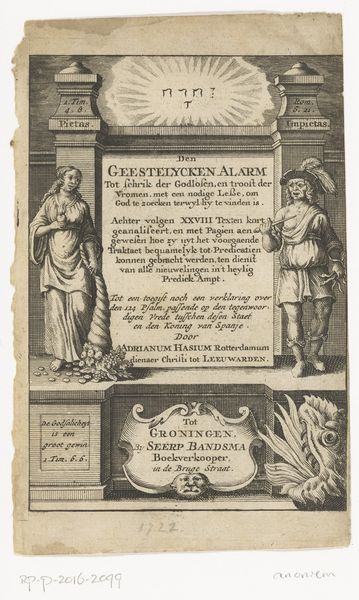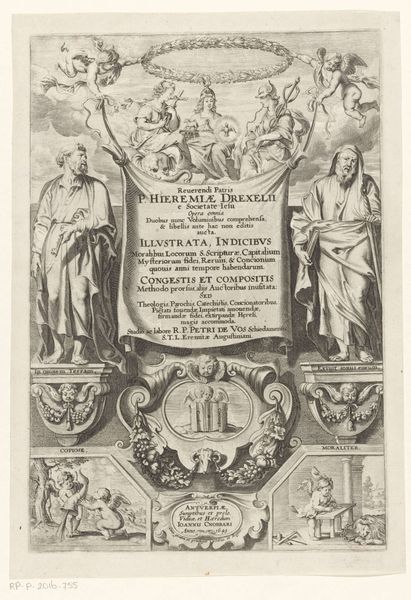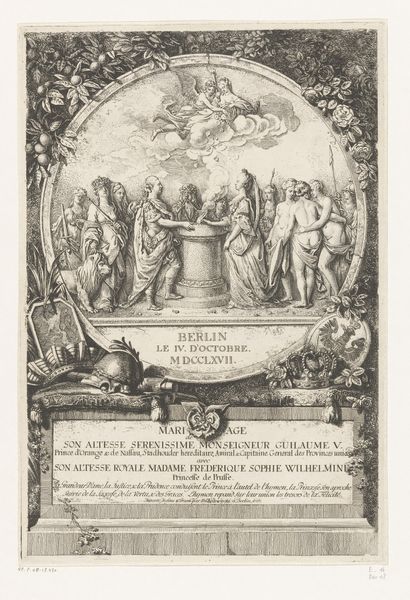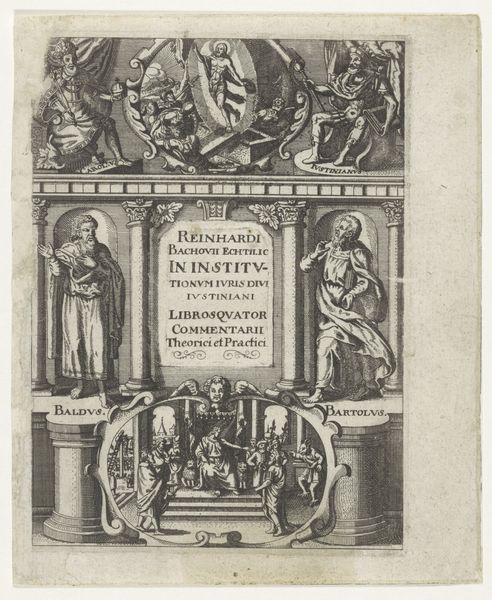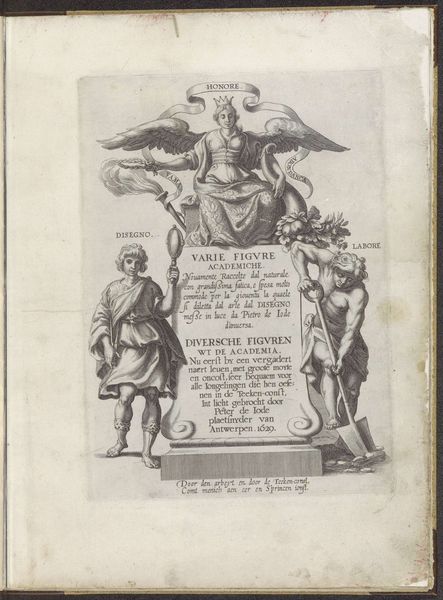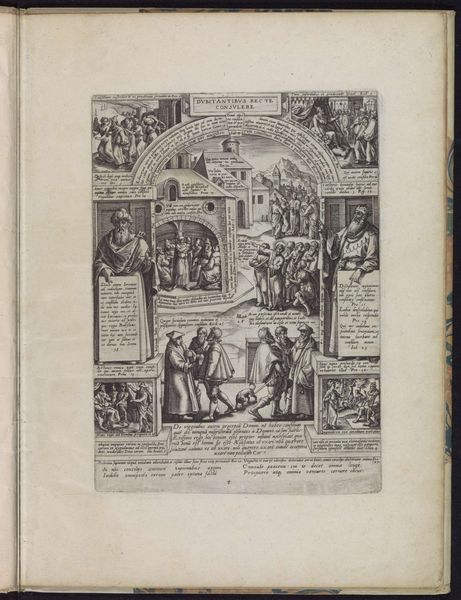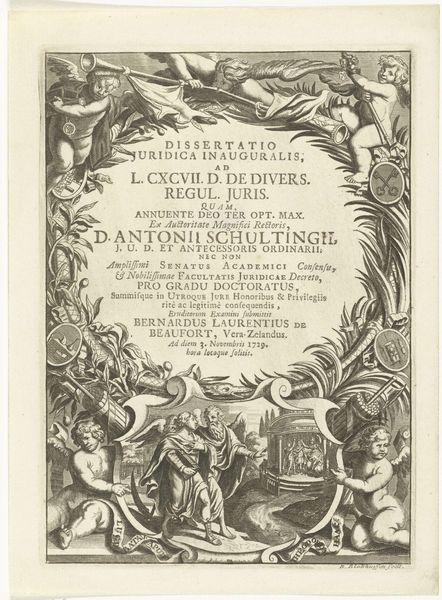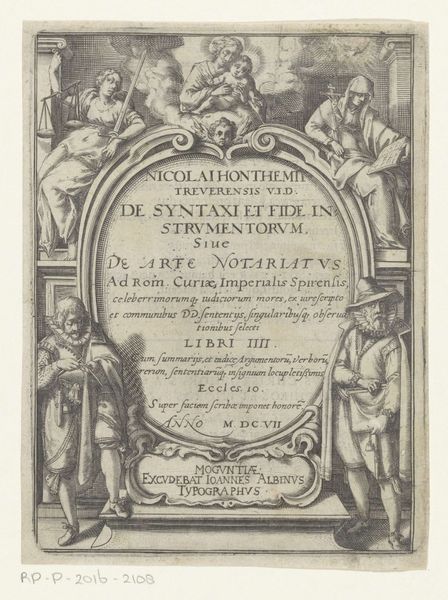
print, paper, engraving
#
baroque
# print
#
traditional media
#
figuration
#
paper
#
line
#
history-painting
#
engraving
Dimensions: height 181 mm, width 132 mm
Copyright: Rijks Museum: Open Domain
Editor: This print, "The Four Evangelists, Truth, and Religion," dates back to 1639 and is quite detailed. What immediately strikes me is its allegorical nature; it seems like it's trying to communicate complex ideas through symbolic representation. How do you interpret this work? Curator: Well, seeing it through a historical lens, it is fascinating how religious and political powers used imagery like this to disseminate specific narratives. It isn’t just about illustrating scripture; it's about shaping public opinion. Notice how "Truth" and "Religion" are personified as women – what does that tell us about the societal values being projected and reinforced at the time? Who was the intended audience and how would the publisher or religious sect gain power by circulating such engravings? Editor: It's like they're constructing a visual argument. So, the placement of these figures, "Truth" on the left, "Religion" on the right, it's all very deliberate, isn’t it? Almost as a commentary on the roles assigned to them during that era. Curator: Precisely! And consider the political context. 1639, the Dutch Republic was in its Golden Age, but also amidst religious and political strife. Prints like these became potent tools in shaping collective identity. Editor: The way the text is so prominent also, it feels integral to the overall impact of the piece, beyond just descriptive labels. Curator: The text anchors the visual message, steering interpretation in a very specific direction. It acts as a kind of "key" dictating how the imagery should be understood. Did they intend to leave any margin for alternative views of scripture, in your estimation? Editor: That's a good point; they really seem to be controlling the narrative here. I hadn’t fully considered the level of social influence this image might have wielded. Curator: It illustrates how art can operate as a form of visual rhetoric, deeply embedded within the social fabric of its time. Editor: This gives me a much broader understanding. I was too focused on the immediate imagery, rather than the underlying intentions and socio-political motivations behind its creation. Thanks for the enlightenment!
Comments
No comments
Be the first to comment and join the conversation on the ultimate creative platform.
